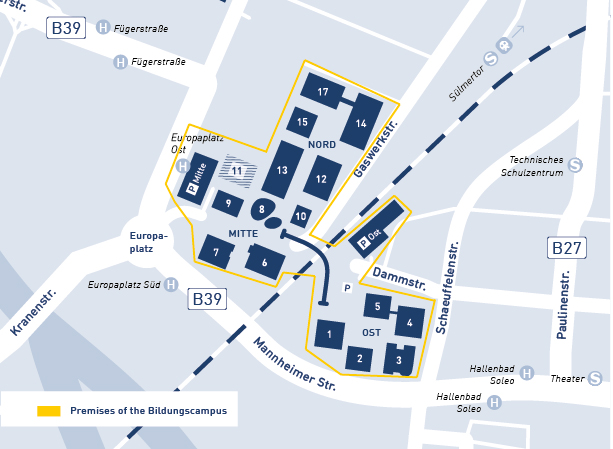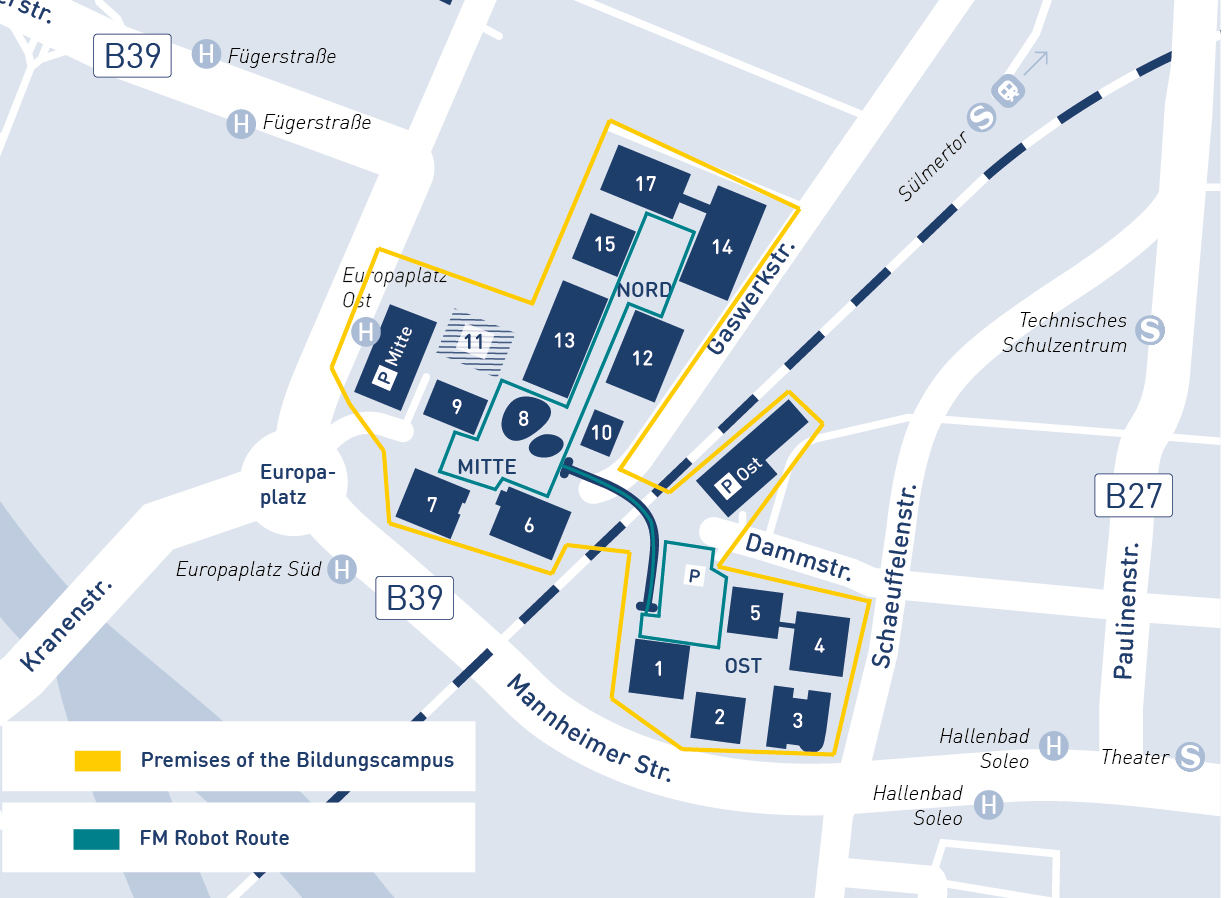The Bildungscampus in Heilbronn is a dynamic hub where education, science and innovation come together to collaboratively shape the future. A key method of innovation used here is the “living lab”. A living lab is defined as a designated area that is temporally, spatially, or thematically limited where new approaches are tested under real-life conditions. This is exactly what happens at the Bildungscampus. The focus is on data-driven technologies for developing smart applications. The goal is to support the work, learning and daily life of campus users, making it as simple and comfortable as possible.
The future is made where we are: In the present.
Sensor-supported technologies like robots for site operations, smart trash cans, or predictive models for the best canteen visit times are various building blocks towards a fully smart and sustainable Bildungscampus. But how do these applications become smart? The answer lies in testing various, concrete scenarios and using the high-quality data generated from them to optimize future processes for the operation and infrastructure of the campus, thereby benefitting its users. Responsible handling and critical reflection on data security and data protection are therefore among the core tasks of a living lab.
The data protection information applicable to the Bildungscampus site can be found here.


